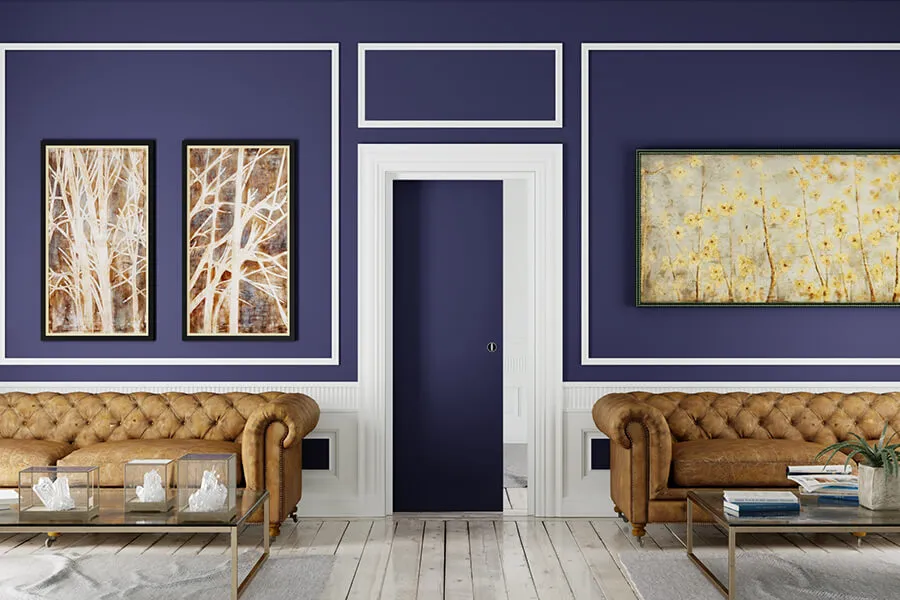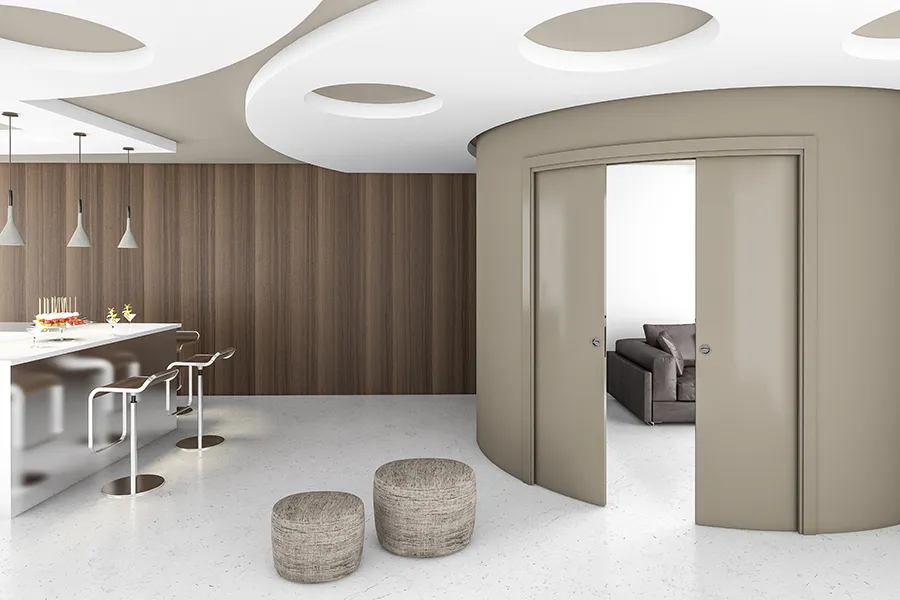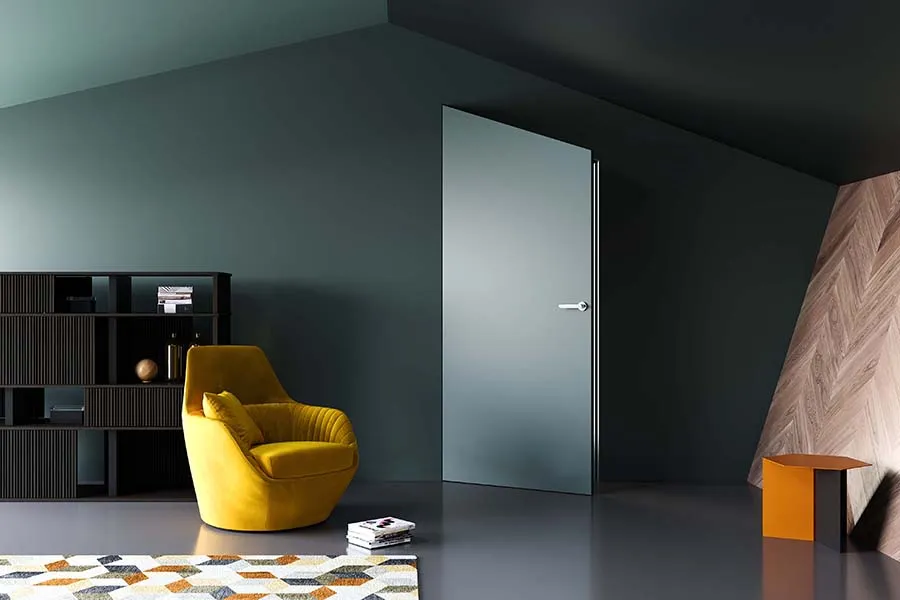News & Trend 04/12/2022
Designing with shapes: architecture and interior doors

Just as painting’s shapes create emotions and sensations in the observer, so designing with shapes an architectural project can influence people’s state of mind.
How shapes influence architecture
Several studies show that designing with shapes influences architecture and the fruition of it. This can convey specific emotions assuming a unique and identifying value for each project.
The choice of a shape is also a distinctive feature of the interior design that you want to achieve, because it can bring creativity and originality. The shapes are part of the architectural compositional language and help to define the spaces’ identity.
This decision is made according to different needs. For example, you can design with shapes to emphasize the alienation of a structure within a context or to differentiate specific structural elements, such as interior doors. You can give character and symbolic values to both indoor and outdoor spaces, so as to influence the well-being of the people who will inhabit those spaces.
The choice of a shape is also a distinctive feature of the interior design that you want to achieve, because it can bring creativity and originality. The shapes are part of the architectural compositional language and help to define the spaces’ identity.
This decision is made according to different needs. For example, you can design with shapes to emphasize the alienation of a structure within a context or to differentiate specific structural elements, such as interior doors. You can give character and symbolic values to both indoor and outdoor spaces, so as to influence the well-being of the people who will inhabit those spaces.

Designing with shapes: interior doors
The shape is considered as the personality of an interior space or an entire building. Think of the most iconic structures of modern architecture such as the Guggenheim Museum in Bilbao or the Sydney Opera House.
In particular, interior design is directly connected to geometric shapes such as rectangles, circles, trapezoids and squares: the history of architecture has always been based on geometric shapes that imply the design itself. They create symbols that evoke emotions. For this reason, designing with shapes is essential to convey a precise message.
Moreover, the appearance and the shape of all the furnishing elements of a project must necessarily be functional. In fact, the architect is constantly searching for design freedom to harmonize our spaces through shapes.
We always associate the house with reassuring sensations: thanks to visual comfort, we can feel safe and live our daily moments in harmony and in psycho-physical balance because the environment reflects our principles and our tastes.
In the interior design’s world, interior doors are also furnishing elements that can convey a specific value, depending on the shape. Let’s see them together.
In particular, interior design is directly connected to geometric shapes such as rectangles, circles, trapezoids and squares: the history of architecture has always been based on geometric shapes that imply the design itself. They create symbols that evoke emotions. For this reason, designing with shapes is essential to convey a precise message.
Moreover, the appearance and the shape of all the furnishing elements of a project must necessarily be functional. In fact, the architect is constantly searching for design freedom to harmonize our spaces through shapes.
We always associate the house with reassuring sensations: thanks to visual comfort, we can feel safe and live our daily moments in harmony and in psycho-physical balance because the environment reflects our principles and our tastes.
In the interior design’s world, interior doors are also furnishing elements that can convey a specific value, depending on the shape. Let’s see them together.
The Circle: semi-circular sliding doors
A semi-circular interior door can meet the most sophisticated expressive needs of a designer. It is about a harmonious, balanced sliding door that creates an attractive aesthetic impact, suitable for contemporary and elegant designs.
The circle, as well as the curved doors, communicates security, dynamism and centrality, conveying values such as serenity, completeness and freedom.
The circle, as well as the curved doors, communicates security, dynamism and centrality, conveying values such as serenity, completeness and freedom.

The Rectangle: interior doors
A classic sliding door with jambs and architraves is the perfect solution if you prefer simpler and more linear shapes such as rectangle and square. These are symbols of stability, confidence, familiarity and functionality, typical of these kind of interior doors. The latter can optimize the habitability of any environment and adapt to any type of design, from the most classic to the most modern one.
The Trapezoid: trapezoidal frameless doors
Finally, interior doors can also be impactful thanks to more alternative details and shapes, such as the trapezoid. These trapezoidal doors are frameless systems capable of combining practicality and design. Designing with shapes such as the trapezoid is synonymous with precision. It reflects the strong character of those who choose them in order to convey sophistication and create a scenic effect.
In modern architecture designing with shapes in a functional way is a basic aspect that cannot be overlooked; architecture acts precisely from society’s needs in which man operates, linking function and shape in order to deeply affect with its projects.

